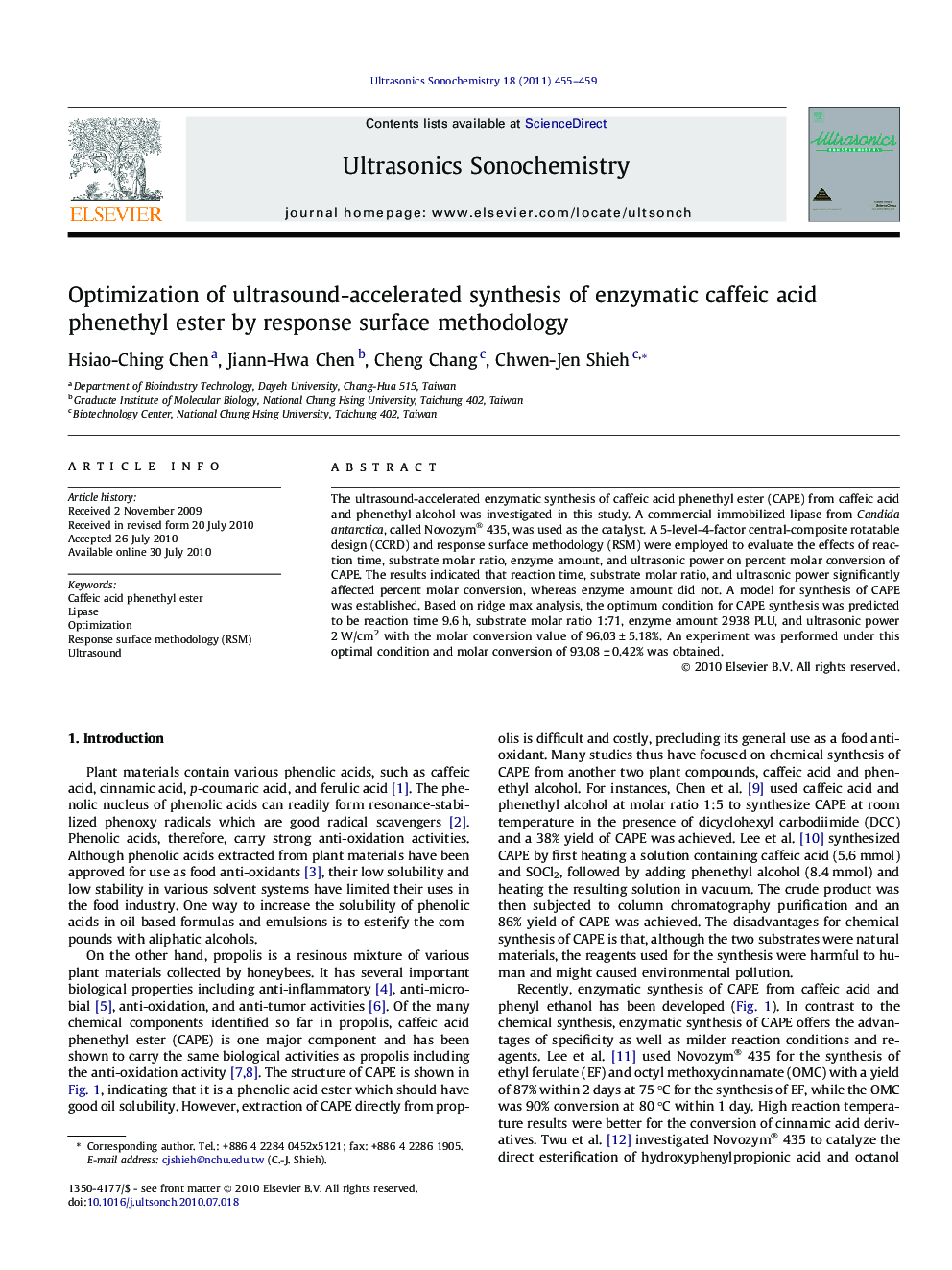| Article ID | Journal | Published Year | Pages | File Type |
|---|---|---|---|---|
| 1266427 | Ultrasonics Sonochemistry | 2011 | 5 Pages |
The ultrasound-accelerated enzymatic synthesis of caffeic acid phenethyl ester (CAPE) from caffeic acid and phenethyl alcohol was investigated in this study. A commercial immobilized lipase from Candida antarctica, called Novozym® 435, was used as the catalyst. A 5-level-4-factor central-composite rotatable design (CCRD) and response surface methodology (RSM) were employed to evaluate the effects of reaction time, substrate molar ratio, enzyme amount, and ultrasonic power on percent molar conversion of CAPE. The results indicated that reaction time, substrate molar ratio, and ultrasonic power significantly affected percent molar conversion, whereas enzyme amount did not. A model for synthesis of CAPE was established. Based on ridge max analysis, the optimum condition for CAPE synthesis was predicted to be reaction time 9.6 h, substrate molar ratio 1:71, enzyme amount 2938 PLU, and ultrasonic power 2 W/cm2 with the molar conversion value of 96.03 ± 5.18%. An experiment was performed under this optimal condition and molar conversion of 93.08 ± 0.42% was obtained.
